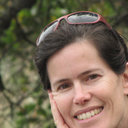Presentation and evaluation of sexual misuse in the emergency department.
Raktažodžiai
Santrauka
Children who have been sexually abused develop a variety of emotional and physical complaints, often unrelated to the genital area. Emergency department records of children diagnosed as being sexually abused were reviewed for the period covering January 1984 through June 1985. Of 26,000 patients seen, 300 cases of sexual abuse were identified. Of these, 57 were patients who presented with initial complaints other than sexual abuse. The data were analyzed for age, sex, chief complaint, time of presentation, physical findings, and person accompanying the child. The most common presenting complaints of these 57 patients were abdominal pain (26%) and vaginal symptoms (26%) The latter included pruritus, discharge, and bleeding. Other complaints included rectal bleeding or constipation (9%), chronic urinary tract infection (5%), straddle injury (4%), and suicide attempt (2%). The remaining 26% included fever, respiratory infections, sore throat, asthma, bronchitis, obesity, mastoiditis, and weight loss. Because resident physicians are instructed to conduct complete anal and genital examinations on all patients, sexual misuse was often diagnosed with seemingly unrelated complaints. A protocol developed for use in the emergency department is described.


